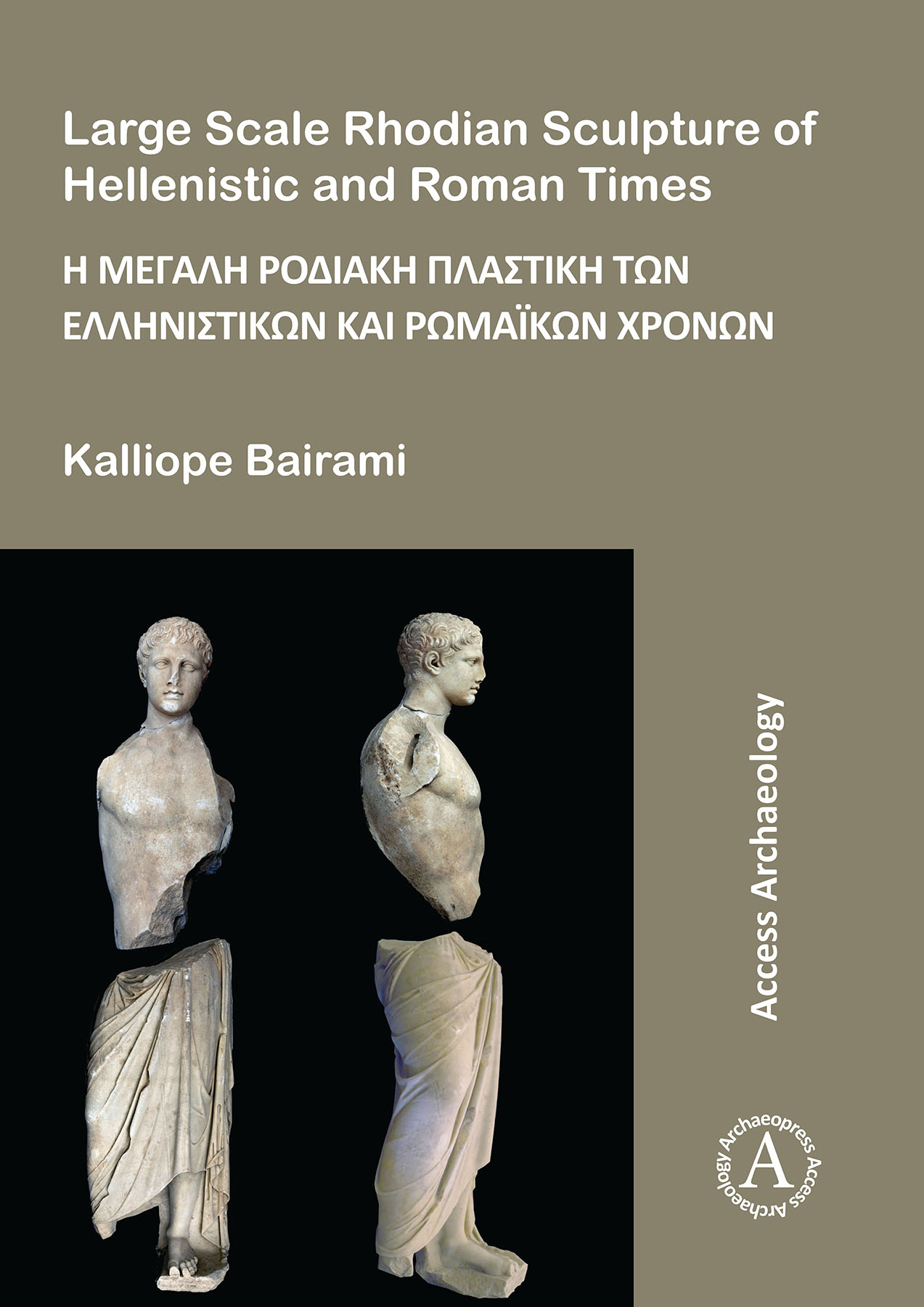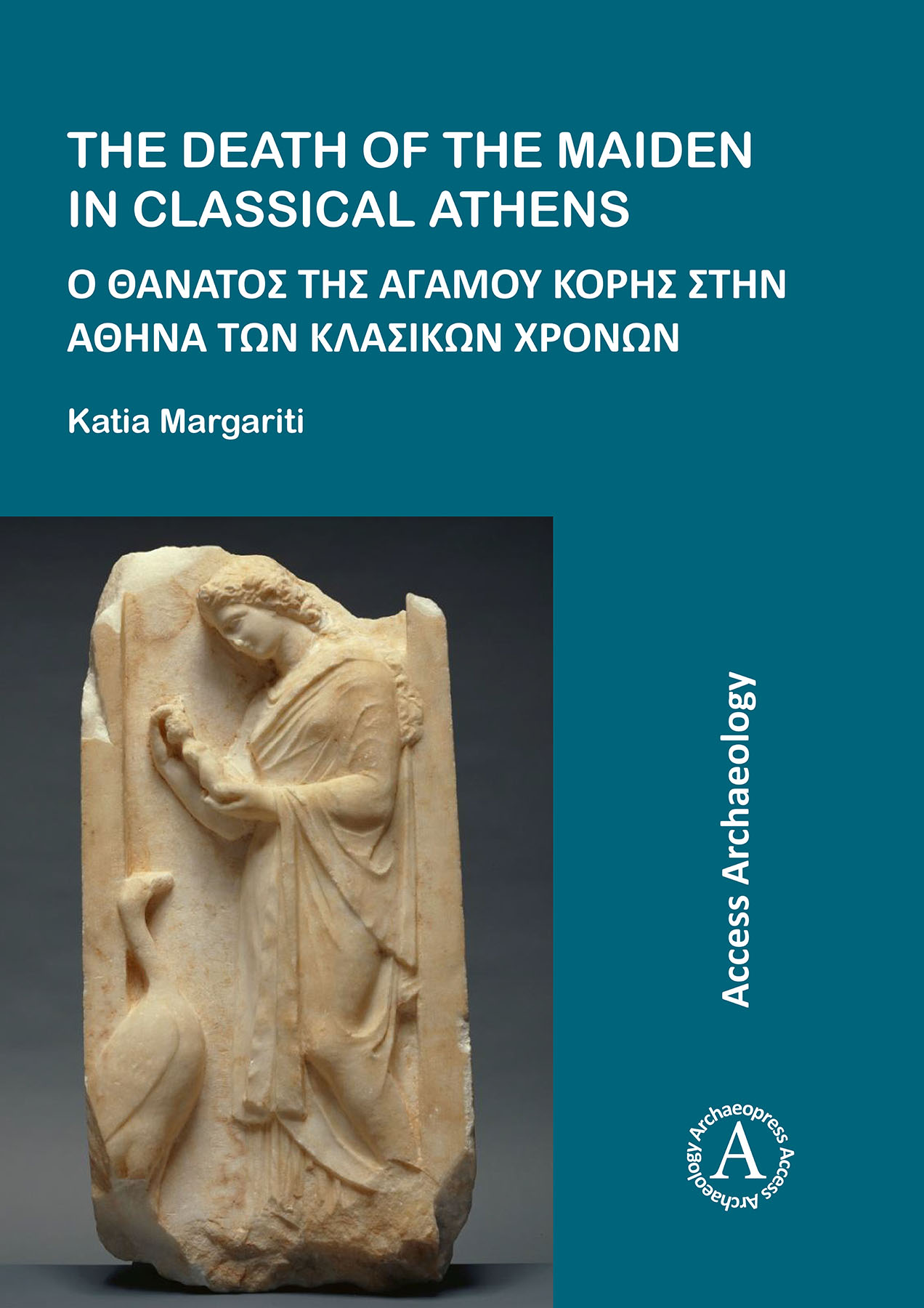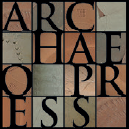
Publishing Scholarly Archaeology since 1997

Download Sample PDF
H 290 x W 205 mm
200 pages
32 figures, 48 plates
Published Nov 2022
ISBN
Paperback: 9781803272535
Keywords
Acropolis; Athena; Ancient Greece; Athens; Sculpture; Statues
Related titles






Acropolis 625: The Endoios Athena
The Statue, Its Findspot and Pausanias
Paperback
£38.00
An interdisciplinary in-depth study of an important Archaic statue of Athena, carved in c. 525 BC. The author’s detailed examination reveals that, unlike earlier seated statues, it is an active figure – a fully armed image of Athena Polias as defender of the city-state.
Contents
Foreword and acknowledgments ;
Introduction: The Endoios Athena and Acropolis 625 ;
Part One: The Statue ;
Chapter I: Condition, composition and overview ;
Chapter II: The statue from top to bottom: Description, analyses and comparanda ;
Head, neck and hair ;
Aegis and Gorgoneion, upper torso ;
Chiton and its relationship to Athena’s body ;
Arms and hands ;
Feet and sandals ;
The stool ;
The central support ;
The plinth ;
Summary and overall analysis ;
Conclusion: Athena as an armed Goddess ;
Chapter III: Measurements ;
Introduction ;
Measurements of the right side (figure 1) ;
Measurements of the front (figure 2) ;
Measurements of the left side (figure 3) ;
Vertical measurements of the back (figures 1 and 3) ;
Horizontal measurements of the back (figure 4) ;
Drill holes on the Aegis: Depth and location (plates 13-15) ;
Measurements of the scallops on the Aegis: Length and location (plates 13-15) ;
Size of Athena relative to The Stool seat ;
Comparisons to other archaic seated figures ;
Conclusions ;
Chapter IV: Proposed reconstruction in words and images ;
Method ;
Head, neck, face, hair and helmet ;
Aegis and Gorgoneion ;
Chiton ;
Forearms and hands, spear and shield ;
Feet and sandals ;
Stool and plinth ;
Archaic colors: Paint and metal ;
Summary and conclusions ;
Chapter V: The statue, summary and conclusions ;
Part Two: The Statue on the Acropolis ;
Chapter I: The Greek revolution and the reported findspot ;
Chapter II: The findspot of Acropolis 625 and its significance ;
Sir William Gell (1777-1836) ;
Turkish fountain, Hypapanti wall, Aghios Nikolaos and Stuart and Revett ;
Edward Dodwell (1777-1832) ;
Richard Chandler (1737-1810) ;
John Cam Hobhouse (1786-1869) ;
The date of the find ;
The significance of the true findspot and the late antique wall ;
Chapter III: The findspot summary and conclusions ;
Chapter IV: Pausanias and the Endoios Athena ;
Pausanias on top of the Acropolis Citadel (1.22.4 through 1.28.3) (figures 20-21, plate 44) ;
The Erechtheion: Herodotos and Pausanias ;
Chapter V: Where was the Erechtheion? ;
The modern controversy over the identification and location of the Erechtheion ;
Robertson’s Erechtheion (SE building) (figure 21.K-L and figures 22-23) ;
Mansfield’s and Pautasso’s Erechtheion (Sanctuary of Zeus Polieus) (figure 21.I-J) ;
Jeppesen’s Erechtheion (’House of the Arrephoroi’ and the Mycenaean Fountain) (Figure 21.O) ;
Pirenne-Delforge on the Erechtheion ;
Van Rookhuijzen’s Erechtheion ;
The Archaic temple of Athena Polias: Dörpfeld and Ferrari (figures 26-27 and plate 47) ;
One temple or two?: The testimony of Himerios and Plutarch ;
Chapter VI: The Karyatid Temple and the Erechtheion ;
The case for the Erechtheion and the temple of the Polias together in one structure ;
The Karyatid Temple ;
Chapter VII: Pausanias and the Endoios Athena. Summary and conclusions ;
The location of the Erechtheion: A summary ;
The probable location of the Endoios’s Athena in Pausanias’s day c. AD 155-60 ;
Overall summary: Acropolis 625: The Endoios Athena ;
Plates ;
Bibliography ;
Index of selected people, places and things

 Add to wishlist
Add to wishlist
